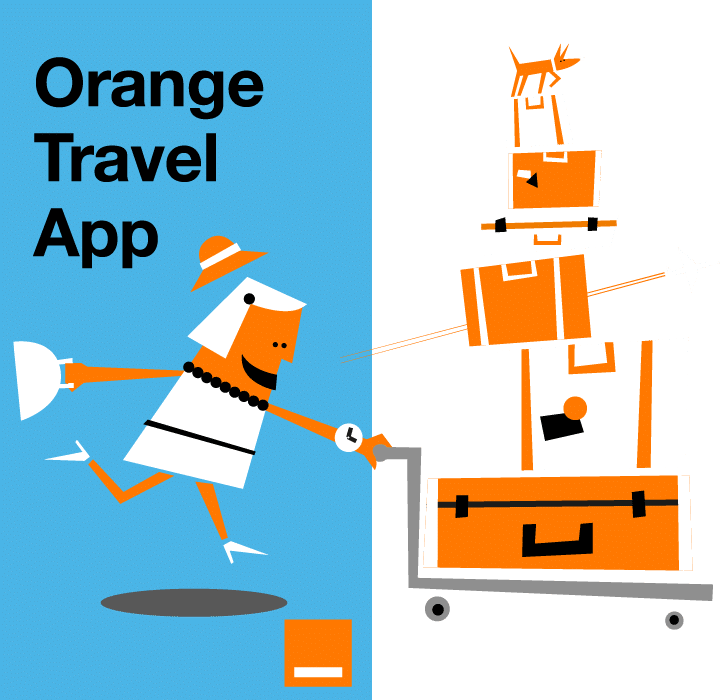Visiting the Great White North soon? Whether you’re exploring the Rockies, attending business meetings in Toronto, or simply enjoying maple syrup in Quebec, staying connected is crucial. But before you turn on your mobile data, there’s one important thing to understand: data roaming in Canada can get expensive fast if you’re not prepared. This guide breaks down everything you need to know to roam smartly in Canada without blowing your budget. From understanding how roaming works to choosing the right data plan, we’ve got you covered.
What is data roaming?
Data roaming allows you to use your mobile phone’s internet services such as browsing, streaming, or GPS when you’re outside your home country. Instead of connecting to your domestic network, your phone uses a partner network in the country you’re visiting. And yes, that usually comes with extra charges, especially in North America. Learn more about what Data roaming is.
Why is roaming expensive in Canada?
Canada is known for having some of the highest telecom fees in the world. If your mobile provider doesn’t have a specific roaming agreement with a Canadian operator (like Rogers, Bell, or Telus), you could be charged high per-megabyte rates for data usage. Even basic tasks like checking Google Maps or sending a photo via WhatsApp could cost you several dollars.
Essential tips
1. Check if your provider offers free roaming in Canada
Some international mobile providers include Canada in their “roam like at home” zones. That means your current mobile plan might already allow you to use your phone in Canada at no extra cost.
- Orange and Sosh clients, for instance, may have access to North America packs.
- Free Mobile offers data in Canada only with certain plans.
- Bouygues Telecom includes Canada in some of its high-end packages.
Tip: Log into your customer area or call your provider before you travel to verify your roaming status.

2. Turn off roaming by default to avoid bill shocks
When you land in Canada, your phone may automatically connect to a local network. If roaming is activated, this could generate immediate costs without you even opening an app.
To avoid surprises:
- Go to Settings > Mobile Data > Data Roaming and switch it off.
- Keep Wi-Fi on to stay connected in airports or hotels.
- Only activate roaming if and when needed.
This small step can save you hundreds of dollars. Learn more about the difference between roaming data and mobile data.
3. Use an eSIM for local or regional data access
One of the smartest ways to manage data roaming in Canada is to use an eSIM a digital SIM card that allows you to connect to local or regional data plans without removing your regular SIM.
Why Use an eSIM?
- Activate it instantly upon arrival.
- Keep your original number for calls and texts.
- Avoid roaming fees.
- Use reliable local networks like Orange.
Orange Travel offers competitive eSIM packages for North America, including eSIM Canada and eSIM USA, making it a convenient and cost-effective choice for both short-term trips and long-term stays.
4. Know how much data you actually use
Understanding your typical data consumption is key. For example:
| Activity | Data Usage per Hour |
| Social Media Browsing | ~100 MB |
| GPS Navigation (Google Maps) | ~5 MB / 10 minutes |
| Streaming Music (Medium Quality) | ~40 MB |
| Video Call (e.g., FaceTime) | ~180 MB |
| Watching YouTube (720p) | ~500 MB |
Keep these numbers in mind when choosing a data plan. Roaming without limits can lead to massive bills, especially if you stream a movie or video call friends daily.
5. Get a local Canadian SIM (If you’il be there a while)
f you’re planning to spend more than 2 weeks in Canada, getting a local prepaid SIM may be the most cost-effective option.
Popular Canadian mobile operators include:
- Rogers
- Telus
- Bell
- Fido (subsidiary of Rogers)
- Koodo (subsidiary of Telus)
These providers offer prepaid packages with data starting from CAD $30/month (around 20€), with unlimited calls and SMS included.
6. Always use Wi-Fi when available
This might seem obvious, but it’s often overlooked. Hotels, airports, cafés, and even public libraries in Canada offer free Wi-Fi.
Enable Wi-Fi Calling on your iPhone or Android. This lets you send texts and make calls over Wi-Fi without needing a mobile network.
7. Limit background data and app usage
Apps like Instagram, Facebook, and email clients often use data in the background, even when you’re not using them. When roaming, every megabyte counts.
To reduce this:
- Go to Settings > Cellular Data > Turn off background app refresh.
- Disable auto-play for videos in apps like Instagram or Facebook.
- Download offline maps in Google Maps.
- Stream music or videos offline (e.g., Spotify, Netflix).
8. Track and manage your roaming charges
Modern smartphones have built-in tools to monitor data usage:
On iOS:
- Go to Settings > Mobile Data
- Scroll down to see how much data each app uses
- You can reset the data stats at the start of your trip
On Android:
- Go to Settings > Network & Internet > Mobile network > Data usage
- Set a usage warning or limit
This helps you stay within your budget and avoid unpleasant surprises.
FAQs on data roaming in canada
Is data roaming in Canada free?
No, not by default. Unless your mobile plan includes free roaming in Canada, you will likely pay extra for data usage.
Can I use WhatsApp or FaceTime in Canada?
Yes, but be careful. These apps use mobile data. Make sure you’re connected to Wi-Fi or using an affordable data plan or eSIM.
What is the best way to stay connected in Canada?
Use Wi-Fi when possible, or get an eSIM plan or local SIM card for cost-effective mobile data.
Will I still receive texts if roaming is off?
Yes, most of the time. Receiving SMS typically works even with data roaming disabled. However, MMS (picture messages) require data.
Final thoughts: roam smart, stay connected
Traveling to Canada doesn’t mean you have to give up on mobile connectivity or pay outrageous roaming charges. With a bit of planning and smart choices like using an eSIM, monitoring your usage, and sticking to Wi-Fi, you can enjoy your trip while staying in touch with family, friends, or clients.
The key to affordable data roaming in Canada is preparation. Don’t wait until you receive your phone bill take control of your mobile usage before you travel.

